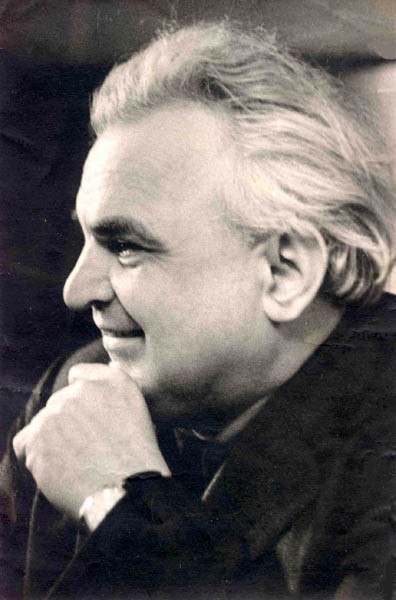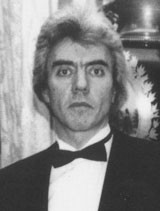
Pavel Serebryakov |
Pavel Serebryakov



For many years, Pavel Serebryakov headed the Leningrad Conservatory, the oldest in our country. And more than half a century ago, he came here from Tsaritsyn and, nervously, appeared before an impressive commission, among whose members was Alexander Konstantinovich Glazunov, as one can say now, one of his predecessors in the “rector’s chair.” The outstanding composer astutely assessed the abilities of the provincial youth, and the latter became a student in the class of L. V. Nikolaev. After graduating from the conservatory (1930) and postgraduate course (1932), he successfully performed at the All-Union Competition in 1933 (second prize).
Brilliant artistic prospects did not force Serebryakov to abandon active musical and social activities, which were always close to his energetic nature. Back in 1938, he stood “at the helm” of the Leningrad Conservatory and remained in this responsible post until 1951; in 1961-1977 he was again the rector of the conservatory (since 1939 a professor). And in general, all this time the artist was, as they say, in the thick of the country’s artistic life, contributing to the formation and development of national culture. It can be argued that such a temperament also affected the manner of his pianism, which S. I. Savshinsky rightly called democratic.
About fifty years on the concert stage… Sufficient time to go through different stylistic phases, to change attachments. The “wind of change” touched, of course, Serebryakov, but his artistic nature was distinguished by a rare integrity, constancy of creative aspirations. “Even at the beginning of his concert activity,” N. Rostopchina writes, “critics noted the scale, initiative, temperament as the most distinctive in the young musician’s playing. Over the years, the appearance of the pianist has changed. Mastery improved, restraint, depth, strict masculinity appeared. But in one respect, his art remained unchanged: in the sincerity of feelings, the passion of experiences, the clarity of worldviews.
In Serebryakov’s repertoire palette, it is also easy to determine the general direction. This is, first of all, the Russian piano classics, and in it, first of all, Rachmaninoff: Second and Third Concertos, Second Sonata. Variations on the theme of Corelli, both cycles of etudes-paintings, preludes, musical moments and much more. Among the pianist’s best achievements is Tchaikovsky’s First Concerto. All this long ago gave E. Svetlanov reason to characterize Serebryakov as a persistent propagandist of Russian piano music, as a thoughtful interpreter of the works of Tchaikovsky and Rachmaninov. Let us add to this the names of Mussorgsky and Scriabin.
On Serebryakov’s concert posters over the past decades, we will find more than 500 titles. Possession of various repertoire layers allowed the artist in the Leningrad season of 1967/68 to give a cycle of ten piano monograph evenings, in which the works of Beethoven, Chopin, Schumann, Liszt, Brahms, Mussorgsky, Tchaikovsky, Scriabin, Rachmaninov and Prokofiev were presented. As you can see, with all the certainty of artistic tastes, the pianist did not fetter himself by any kind of framework.
“In art, as in life,” he said, “I am attracted by sharp conflicts, stormy dramatic collisions, bright contrasts … In music, Beethoven and Rachmaninov are especially close to me. But it seems to me that a pianist should not be a slave to his passions… For example, I am attracted to romantic music – Chopin, Schumann, Liszt. However, along with them, my repertoire includes original works and transcriptions of Bach, Scarlatti’s sonatas, Mozart’s and Brahms’ concertos and sonatas.
Serebryakov always realized his understanding of the social significance of art in direct performing practice. He maintained a close relationship with the masters of Soviet music, primarily with Leningrad composers, introduced listeners to the works of B. Goltz, I. Dzerzhinsky, G. Ustvolskaya, V. Voloshinov, A. Labkovsky, M. Glukh, N. Chervinsky, B. Maisel, N. Simonyan, V. Uspensky. It is important to emphasize that many of these compositions were included in the programs of his foreign tours. On the other hand, Serebryakov brought to the attention of the Soviet audience little-known opuses by E. Vila Lobos, C. Santoro, L. Fernandez and other authors.
All this diverse musical “production” was demonstrated by Serebryakov brightly and seriously. As S. Khentova emphasized, “close-up” dominates in his interpretations: clear contours, sharp contrasts. But will and tension are organically combined with lyrical softness, sincerity, poetry and simplicity. A deep, full sound, a large amplitude of dynamics (from a barely audible pianissimo to a mighty fortissimo), a clear and flexible rhythm, bright, almost orchestral sonority effects form the basis of his mastery.
We have already said that Serebryakov was associated with the Leningrad Conservatory for many years. Here he trained many pianists who are now working in different cities of the country. Among them are the laureates of all-Union and international competitions G. Fedorova, V. Vasiliev, E. Murina, M. Volchok and others.
References: Rostopchina N. Pavel Alekseevich Serebryakov.- L., 1970; Rostopchina N. Pavel Serebryakov. – M., 1978.
Grigoriev L., Platek Ya., 1990





